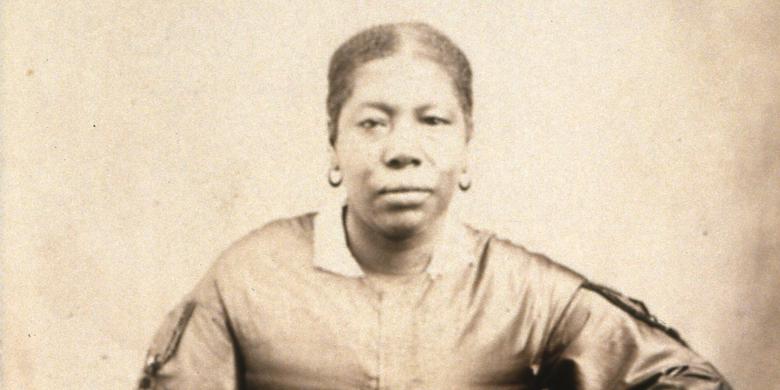This is the second post in a roundtable on Quincy D. Newell’s Your Sister in the Gospel: The Life of Jane Manning James, a Nineteenth-Century Black Mormon (Oxford University Press, 2019). Read the first post here. (I would alternately title it—Perhaps, Perhaps, Perhaps—if anyone out there needed a Cake reference.)

There is much to appreciate in Quincy Newell’s new biography of Jane Manning James. She has masterfully fleshed out an illuminating and complex narrative of a paradoxical life marked by documentary absence more than presence, more atypical than common. Quoting what was perhaps Jane’s final plea for participation in temple rites to Joseph F. Smith—Latter-day Saint church president, the title offers the motivating paradox of the narrative: a free black female Latter-day Saint as an agent in a mostly white church with a white LDS Church hierarchy. Mormonism offered Jane truth, fellowship, and a voice at the same time as it negated her full sisterhood and barred her from the culmination of earthly religious rites for Latter-day Saints. Though Newell reminds us that we know more about Jane than some historical subjects, we must underscore the paucity of documents available. Newell scoured a vast expanse of sources that help us better understand Jane’s life and to recognize her agency amidst the tensions surrounding her. Newell’s both broad and precise contextual work enables her to read “against the grain” and provide a substantive foundation for her suppositions all the while reminding us of the limitations of the source material.
Newell’s methodological example cautions us against hasty conclusions when the sources are scant, and moreover provides an important reminder that also applies when the sources are plentiful. When sources overflow, at times our arrogance expands and we believe that we can access the past perhaps a little more completely than we can. Sources are never perfectly even. One person might write effusively and others sparingly. Sources are always mediated—in this instance, Jane mediates as an agent as well as others mediating her voice before it reaches us in the present. No source provides a perfect objective view of the past.
Newell builds up and interrogates those limited sources through extensive research. She mines the mostly untapped and vastly under-rated ward Relief Society Minute Books and finds Jane a lively equal participant in the charismatic outpouring of the early Utah Relief Societies. Unlike later evangelicals, charismatic events were not segregated. In contrast to the hierarchically controlled Latter-day Saint temples, Jane’s blackness did not appear to limit her participation in the mostly autonomous women’s organization.
Importantly, Quincy also enables us to see the salvific potential that Jane might have seen within Mormonism. She begins to evaluate the possibility of Restoration scripture as a liberating factor in Jane’s life, she uses scripture to offer context to Jane’s “unsatisfactory” sealing as a “servitor,” as well as offering full text of critical documents in appendices—including Jane’s two patriarchal blessings and the most extensive accounts of Jane’s words.
One example that I believe could have further reinforced Jane’s agency and her social immersion—her sisterhood—in the Latter-day Saint community is this tidbit from Eliza Partridge Lyman’s journal:
April 13 [1849]: Brother Lyman [Eliza’s husband, Amasa] started for California with O. P. Rockwell and others. May the Lord bless and prosper them and return them in safety to their families and friends. Brother Lyman has left us . . . without anything to make bread, it not being in his power to get any.
April 25: Jane James, a colored woman, let me have about two pounds of flour, it being about half she had. [Eliza Partridge Lyman, Journal, 1846–1885, 45–47, CHL.]
Clearly, Eliza is desperate by the 25th, after almost two weeks without anything to make bread. She had known Jane since they lived together in the Mansion House in Nauvoo. In 1849, they lived in neighboring wards in Salt Lake in 1849. Whether Eliza went to Jane to ask for help or Jane just appeared on her doorstep, Jane was a sister and provided for her sister in need at a time when Jane herself didn’t have a lot to give. Though this example by itself might paint Jane as the perfectly charitable Saint who always did the right thing no matter how she was treated, Quincy Newell provides a complex narrative that would have placed that story in the larger context of Jane’s life and avoided a hagiographic brush. Her masterful narrative offers the reader a sense of the many paradoxes of sisterhood for Jane.
*Quincy reminds us that we believe that this is a photograph of Jane, but we lack an airtight identification.
Thanks, JJohnson!
Comment by Jeff T — June 25, 2019 @ 12:39 pm
Thanks, Janiece. I’m fascinated by the community dynamics in 19C Mormonism. So much has (rightly) been made of insider/outsider mentality, but I’d love to see more of what it was like for LDS of Color to live among Anglo-Americans. I guess I’ll have to wait for Quincy’s next book!
Comment by J Stuart — June 25, 2019 @ 2:52 pm
Thanks, JJ!
Comment by David G. — June 25, 2019 @ 4:40 pm
I didn’t realize there was still any question about this being a photograph of Jane Manning James, after Amy Tanner Thiriot’s overlaying of the photo with the newspaper engraving made from it, published and captioned during Jane’s life.
See Jane James Picture (Revisited).
Comment by Ardis E. Parshall — June 25, 2019 @ 6:27 pm
Ardis- I missed that. I, too, would consider that conclusive. And I like that newspaper sketch of Jane.
Comment by JJohnson — June 26, 2019 @ 9:33 am